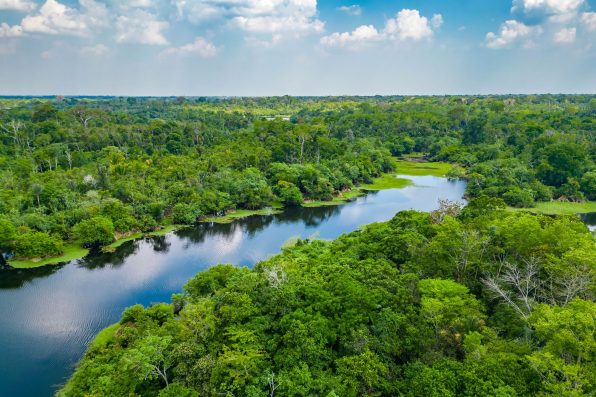Researchers Discovered A Lost 18th-Century Colonial City In The Amazon Rainforest

A lost colonial city dating back to the 18th century was discovered in the Amazon rainforest. The ancient Portuguese settlement had previously appeared on maps, but its exact location was unclear.
“It was abandoned, the forest took over, and the stone blocks were removed…We were able to identify the layout of the streets of this city, which was also a fascinating discovery,” said Eduardo Neves, the lead researcher and director of the Museum of Archaeology and Ethnography at the University of São Paulo.
In the year 1500, the explorer Pedro Álvares Cabral claimed the land for Portugal, marking the beginning of colonization of what is now Brazil.
During the next three centuries, Portugal established a colonial administration and used slave labor from Africa to exploit Brazil’s natural resources, particularly coffee, sugar, and gold.
Finally, in the early 19th century, Brazil declared its independence, ending over 300 years of colonial rule. The discovery of the colonial city in the Amazon was part of the Amazônia Revelada project.
The project’s goal is to identify archaeological sites throughout the Amazon using advanced technology and the traditional knowledge of the people who live in the rainforest.
“We want to register these archaeological sites to make them part of [our] heritage and create an additional layer of protection for these territories,” Neves said.
The project involves two main strategies. First, the rainforest is surveyed using LIDAR technology to detect archaeological sites concealed by dense vegetation.
LIDAR is a remote sensing method that uses lasers to measure distances and create three-dimensional models of the Earth’s surface. It allows researchers to see through the forest canopy.

PhotoSpirit – stock.adobe.com – illustrative purposes only
For the second strategy, local researchers conduct surveys. They are part of the indigenous and traditional peoples who live in the area.
The researchers record archaeological sites or places that hold much significance within the communities.
The Amazon region is known to have been inhabited for at least 12,000 years, but older artifacts suggest that people lived in the rainforest even earlier than that, possibly 13,000 years ago or more.
Long before contact with the Europeans, indigenous peoples developed complex societies in the Amazon.
There has been plenty of evidence of large communities, agricultural practices, and land management techniques.
In the past, LIDAR technology was used to document hidden structures and sites in the Amazon. Last year, the discovery of two dozen constructions was reported.
The constructions were earthworks built during the pre-Columbian era before the Europeans colonized the region.
They are the remnants of various sites and structures made by the hands of ancient indigenous peoples.
The earthworks include the remains of a town, fortified villages, geoglyphs, and riverbank sites on floodplains that may have been used to hunt for aquatic food and other constructions.
Sign up for Chip Chick’s newsletter and get stories like this delivered to your inbox.
More About:News





